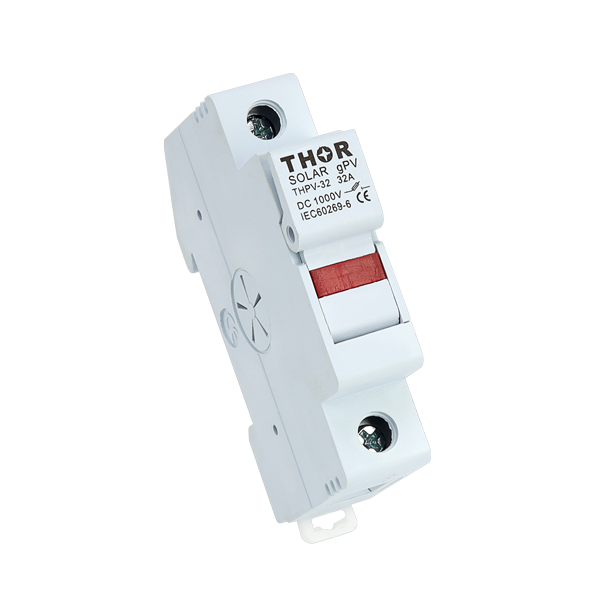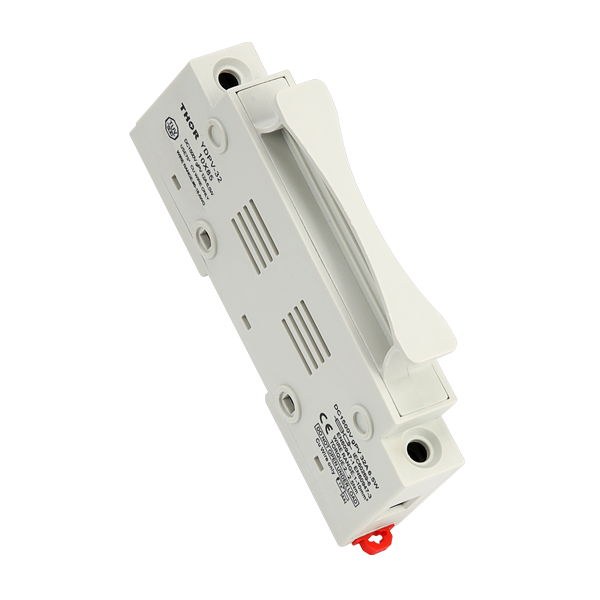An AC fuse is a safety device used to protect circuits from excessive current. When the current exceeds the fuse's rating (such as 15 amps), its internal wire will melt, disconnecting the circuit within milliseconds to prevent equipment damage or fire.
Introduction to AC Fuses
Imagine you are setting up all the latest equipment for your home theater; surely you want the best protection against power surges, right? This is where AC fuses become important. These small devices are crucial for protecting your electronic equipment from power surges that may occur during storms or due to other electrical faults.
AC fuses are not one-size-fits-all. Depending on the application, you might find them in different shapes and ratings. For example, a typical household might use a 15-amp fuse for ceiling light circuits, but for an air conditioner or washing machine, a 30-amp fuse might be necessary. Glass tube fuses and ceramic fuses are popular choices; the former is commonly used in residential applications because it responds quickly to overcurrent, while the latter is often preferred in industrial environments due to its higher durability and resistance to temperature variations.
Let's consider a practical example. During a thunderstorm, a power surge might travel through your electrical system. According to a report by the National Fire Protection Association, surges can generate voltages of up to thousands of volts in milliseconds. If you have a properly rated AC fuse installed in your distribution panel, it will "blow" in case of an overload—meaning the internal wire will melt—thus interrupting the flow of current. This simple action prevents the surge from reaching your expensive TV and sound equipment, significantly reducing the risk of an electrical fire.
How AC Fuses Work
AC fuses control the current through their internal metal filament, ensuring that the current does not exceed the circuit's design safety limit. These devices are critical in both residential and industrial settings because they can quickly disconnect the circuit in case of excessive current, protecting electrical equipment and preventing fires.
When the current exceeds the fuse's carrying capacity, the internal metal wire (usually made of copper or silver, due to their high conductivity and moderate melting point) melts due to heat. This fusing action occurs in milliseconds, rapidly cutting off the power to prevent further damage from overcurrent. For example, a standard household 15-amp AC fuse can blow in about 0.02 seconds when subjected to a 20-amp current.
More detailed quantification shows that AC fuses can respond in as little as tens of milliseconds when the current exceeds the rated value by 20%. This fast response is crucial for protecting sensitive electronic devices, such as computers and home entertainment systems, which are very sensitive to current anomalies.
When selecting a fuse, it is important to understand its rated current and blow characteristics. The rated current determines the maximum current that the fuse can safely pass without triggering the blow mechanism. The blow characteristics describe the speed at which the fuse responds to current exceeding its rating, necessary for handling sudden current peaks.

Common Types and Applications of AC Fuses
AC fuses come in various types to meet different needs and application scenarios, each designed for specific current ranges and environments.
Glass tube fuses are one of the most common types, typically used for home and small office equipment. These fuses consist of a transparent glass tube body with an internal metal wire, making it easy to see if the fuse has blown and needs replacement. Glass tube fuses are commonly used in TVs, radios, and other household appliances, favored for their quick response to overload currents.
Ceramic fuses offer higher temperature and voltage resistance, suitable for applications requiring large current and high-temperature environments. These fuses are commonly found in industrial equipment and large home appliances, such as air conditioning systems and large industrial machinery. The ceramic housing not only withstands high temperatures but also provides higher mechanical strength and electrical insulation.
Another common type of fuse is the circuit breaker fuse, which can disconnect the circuit when the current is too high and can be reset and reconnected after the problem is resolved, without needing to replace the fuse. This type of fuse is especially suitable for commercial buildings and high-demand electrical systems because they provide easier maintenance and longer service life.
When selecting an AC fuse, it is crucial to consider its rated current and blow speed. The rated current should be chosen based on the normal working current of the circuit, and the blow speed should be chosen based on the maximum current peak and the sensitivity of the application.
For example, a home air conditioning system might require a 30-amp rated ceramic fuse to operate normally even at extreme external temperatures without blowing the fuse prematurely, causing the air conditioner to shut down. Similarly, an industrial environment with multiple high-power devices might need fuses with fast blow characteristics to protect the equipment from sudden current surges.

How to Properly Choose and Install AC Fuses
Choosing AC Fuses
-
Determine the current rating: The first step in choosing a fuse is to determine the normal operating current of the circuit. The fuse's rated current should be higher than the circuit's maximum operating current to avoid unnecessary power outages, but not too high to ensure it can disconnect the circuit promptly in case of an actual overload. For example, if the circuit's normal operating current is 10 amps, a 15-amp fuse might be chosen.
-
Consider blow characteristics: The fuse's blow speed (fast or slow) should be chosen based on the circuit's characteristics and requirements. Fast blow fuses are suitable for sensitive devices requiring high current precision, while slow blow fuses are suitable for devices with possibly large starting currents for a short time, such as motors.
-
Choose the fuse type: Select the appropriate fuse type based on the application environment and safety requirements. As mentioned earlier, glass tube fuses are suitable for household appliances, while ceramic fuses are suitable for industrial environments.
Installing AC Fuses
-
Disconnect power: Always ensure the power is disconnected before installing a fuse to avoid electric shock during installation.
-
Inspect the fuse holder: Ensure the fuse holder is clean, undamaged, and has good contact. A damaged fuse holder may cause poor contact with the fuse, affecting its performance.
-
Properly place the fuse: Correctly place the fuse in the fuse holder. Ensure the fuse is firmly installed in place, with good contact and no looseness.
-
Reconnect power and test: After installing the fuse, reconnect the power and test whether the circuit works normally. Check for any anomalies, such as the fuse blowing immediately, which may indicate a problem with the circuit.
Maintenance and Replacement of AC Fuses
Regular Inspection of Fuses
Fuses should be regularly inspected to ensure they have not blown or been damaged. Even without overload events, fuses can degrade over time and due to environmental factors such as humidity and temperature changes. When inspecting fuses, pay attention to the following:
- Visual inspection: For glass tube fuses, observe whether the internal filament is intact to determine if it has blown. If the filament is broken or there are burnt marks inside the fuse, it indicates replacement is necessary.
- Test with a multimeter: For opaque or not easily observable fuses, use a multimeter's continuity test function to check if the fuse is intact. If the multimeter shows no continuity, the fuse has blown.
Proper Replacement of Fuses
When determining that a fuse needs replacement, take the following steps to ensure safe and proper replacement:
-
Disconnect power: Always ensure the power to the relevant circuit is completely disconnected before replacing a fuse to avoid electric shock.
-
Remove the old fuse: Carefully remove the damaged fuse using appropriate tools (such as fuse pullers). Avoid directly touching the fuse ends with metal tools to prevent short circuits.
-
Inspect and clean the fuse holder: Before installing a new fuse, check the fuse holder for corrosion or other damage, and clean if necessary. Good contact is key to ensuring the fuse's proper function.
-
Install the new fuse: Choose a new fuse of the same type and specification as the original, ensuring its current and voltage ratings are suitable for the circuit. Correctly install the fuse, ensuring it is firmly in place in the fuse holder.
-
Reconnect power and test: After replacing the fuse, reconnect the power and test whether the circuit works normally. Ensure the newly installed fuse can carry the current without immediately blowing.
